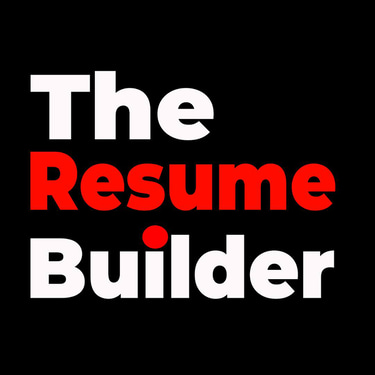Why Just Posting Your Resume on LinkedIn Won’t Get You Hired
Posting your resume on LinkedIn won't get you hired. Learn why personal branding, engagement and referrals work better in today's job market.
Abhishek Kundu
7/11/20255 min read


Every day, thousands of job seekers paste their entire resume in a LinkedIn post or simply upload their CV hoping for a miracle. The assumption? Someone influential will see it, be impressed, and hand over an opportunity on a silver platter.
Unfortunately, LinkedIn doesn’t work that way. It’s not a virtual job fair where passive displays of desperation automatically yield offers. LinkedIn is a professional networking ecosystem—a place that rewards value, connection, and consistency.
So if you’re one of those people who have been pasting their resume into a post, tagging random HRs, and waiting for a call- stop. Not because your intent is wrong, but because your method is outdated, misunderstood and inefficient.
This article will break down:
Why the "post and pray" method is broken.
How LinkedIn’s ecosystem actually works.
Why branding and engagement matter more than broadcasting.
A smarter roadmap for visibility, referrals, and opportunities.
1. The Harsh Truth: No One Owes You Their Time
Let’s be honest. People on LinkedIn are busy: recruiters, hiring managers, CXOs, even peers. They scroll fast. They’re hunting for value, insights, or connections not someone asking for a job with a bland resume dump.
Unless:
You are already known in your industry.
Your profile is well optimized and grabs attention instantly.
You’ve engaged meaningfully on the platform for weeks or months.
…your post will most likely sink without a ripple.
Harsh? Yes. True? Absolutely.
Recruiters don’t go hunting through random resume posts. They use filters, keywords, profile signals, and most importantly referrals and connections to fill roles. That’s the game.
2. LinkedIn Is Not a Job Board. It’s a Branding Playground.
Treating LinkedIn like Naukri or Indeed is a classic blunder. It’s not a passive CV bank.
It’s a place where:
You build authority by sharing insights.
You nurture relationships through genuine engagement.
You show your personality beyond the bullet points of a resume.
Here’s what works far better than uploading your CV:
Sharing stories of your professional growth or challenges.
Giving actionable insights from your domain.
Commenting meaningfully on others’ posts.
Engaging in discussions with recruiters and hiring managers
These actions compound your visibility and credibility.
3. The Resume Post Trap: Why It Fails
Let’s break down the real reasons why the “resume in a post” strategy doesn’t work:
a. It lacks context:
A resume is designed for targeted sharing not public consumption. When you drop it into a post, the viewer has no idea what role you’re applying for, what you’re passionate about, or why they should care.
b. It reeks of desperation:
Even if your intent is genuine, resume-posts often feel transactional. “Here’s my resume, now give me a job.” It turns people off.
c. It’s zero effort:
A copy-pasted resume shows you haven’t understood the platform. It signals passivity instead of proactive networking.
d. You haven’t built social capital:
Imagine someone you’ve never heard of suddenly asking for a favor. That’s what these posts feel like to recruiters who don’t know you.
4. What Recruiters Actually Notice on LinkedIn
Contrary to popular belief, recruiters love LinkedIn but they use it wisely. Here’s what draws their attention:
A clean, optimized profile with clear headlines, detailed experience, and a keyword-rich summary.
Activity history that shows you’re engaged and informed about your industry.
Recommendations from colleagues, managers, or clients.
Thoughtful content that reflects your expertise and communication skills.
Common connections or internal referrals from their own network.
Notice what’s missing? Nowhere in this list is: “random person pasted their CV on the timeline.”
5. What You Should Do Instead: Smart LinkedIn Strategies
Here’s a breakdown of what actually works on LinkedIn—strategies that compound over time:
A. Build a Magnetic Profile
Think of your profile as your digital storefront. Before anyone talks to you or replies to a message—they check your profile.
What makes a strong profile?
A powerful headline (not “seeking opportunity” but “Marketing Analyst | Excel & Tableau Expert | Driving Data-Backed Campaigns”)
A summary that’s not a dry monologue but a storytelling snippet of your career and value.
Complete experience section with measurable achievements.
Relevant skills & endorsements.
A professional photo and custom banner.
B. Be Active-But Add Value
Posting regularly isn’t about frequency. It’s about value delivery.
Great post ideas:
Share a lesson you learned from a project.
Break down a trending topic in your industry.
Talk about a problem and how you solved it.
Celebrate a team achievement (without bragging).
Ask a thought-provoking question to your network.
One good post a week beats five meaningless posts daily.
C. Engage Strategically
If you’re not ready to post yet, at least engage.
Follow recruiters and leaders in your domain.
Comment meaningfully on their posts (not just “Great post!” but something thoughtful).
Join relevant LinkedIn groups and discussions.
Mention others when appropriate and share insights.
This builds visibility, credibility, and relationships, all without ever saying “please hire me.”
D. Message With Context, Not Desperation
If you want to message a recruiter or connection, don’t send your resume cold.
Instead:
Introduce yourself.
Mention something specific about their work or company.
Express your interest clearly but humbly.
Ask for advice or guidance, not a job.
This starts a conversation, not a transaction.
E. Use Referrals, Not Random Shouting
Referrals work because they come with built-in trust.
How to get them:
Reach out to your alumni network or ex-colleagues.
Attend virtual meetups or LinkedIn audio events.
Ask your existing connections for an intro to someone inside a target company.
Offer value in return. Even a “thank you post” after a referral shows gratitude and boosts visibility.
F. Be Consistent for 30 Days
Forget viral posts or overnight fame.
Just try this:
One good post every week.
Five meaningful comments every day.
Message one new person every 2–3 days with context.
Optimize your profile once and keep tweaking.
Share content from others with your own thoughts.
In 30 days, you’ll:
Have more profile views.
Get connection requests.
Be noticed by people who matter.
6. Real Examples: What Works vs. What Doesn’t
Let’s take a simple example:
What doesn’t work:
“Hi, I am looking for job change. Attached my resume. Please help. #JobSeekers #OpenToWork”
What works:
“After 5 years in sales and distribution, I’ve learned one truth: customer retention is built on empathy, not just numbers.
I’m now looking to apply this mindset in a role where I can blend data and customer experience.
If you’re in the FMCG or retail hiring space, would love to connect and exchange insights.”
Which one feels more human, credible, and approachable?
7. Addressing the Counterarguments
“But I saw someone get a job just by posting their resume!”
Yes, outliers exist. But they’re the exception, not the rule. Virality ≠ strategy.
“I don’t have time to engage every day.”
Then at least optimize your profile and build strong connections privately. Passive posting is just wasted effort.
“I’m not good at writing posts.”
You don’t need to be a content creator. Just be real. Even short, thoughtful updates work better than a resume dump.
8. Conclusion: Be Proactive, Not Passive
LinkedIn is the single most powerful platform for job seekers—but only when used the right way. Don’t reduce your job hunt to a copy-paste game. You deserve better. And employers expect better.
Instead of dropping your resume like a flyer and hoping someone picks it up:
Be human.
Build relationships.
Share your voice.
Show your journey.
Ask for help, but also offer value.
You’re not a job title. You’re a story in progress. Tell it well.
Final Checklist: Smart LinkedIn Job Strategy
Optimized profile with clear headline and summary
One value-driven post per week
Five meaningful comments daily
Thoughtful, contextual messages (not spam)
Referrals from people you trust
Followed and engaged with industry leaders
Joined groups, attended events, stayed visible
Never dumped resume in a post without story or context
Let’s Flip the Script
Instead of shouting “Hire me,”
Let’s start asking: “How can I showcase my value so people want to hire me?”
Once you shift from resume spammer to LinkedIn pro, doors start opening—faster than you think.
Expert in
Professional Resume Writing Company in Kolkata, West Bengal
Professional Resume Writer in Kolkata, West Bengal
ATS Resume Writing in Kolkata, West Bengal
GET IN TOUCH
theresumebuilderindia@gmail.com
+91 89813 60947
© 2015. All rights reserved by Abhishek Kundu Resume Writing Co.
abhishek@atsresumewriting.in
